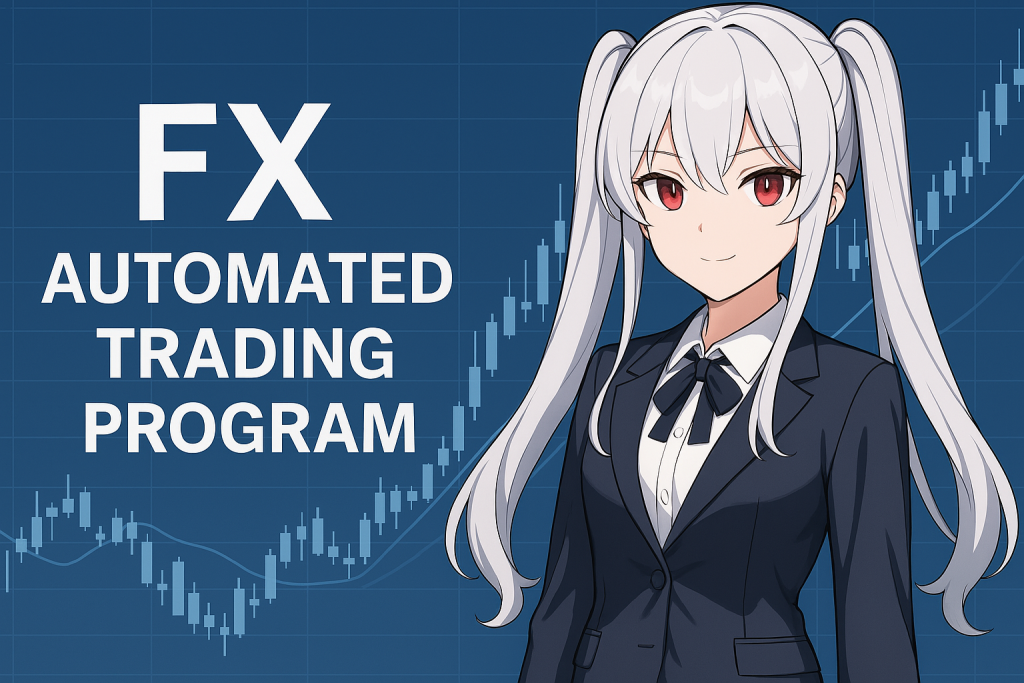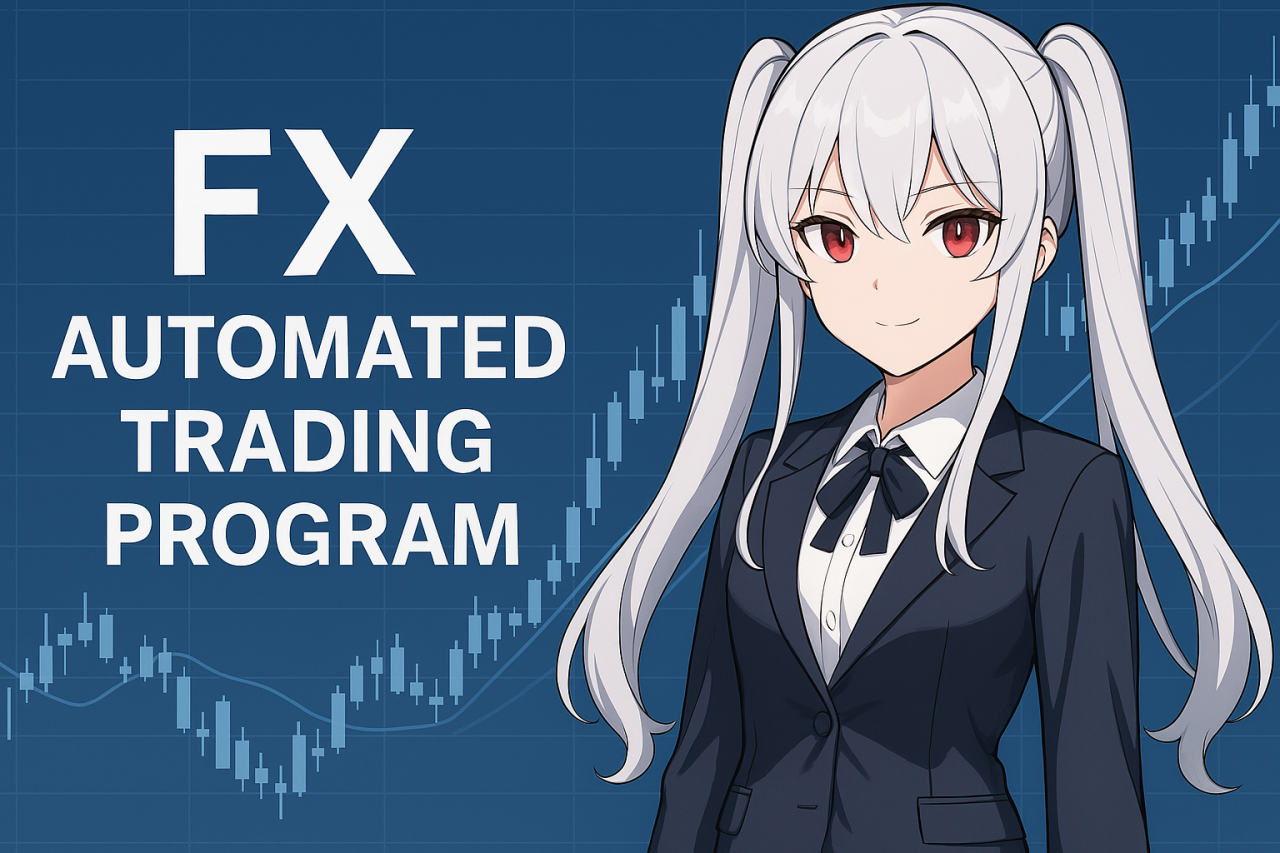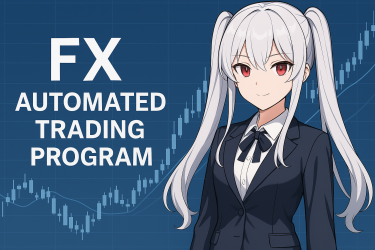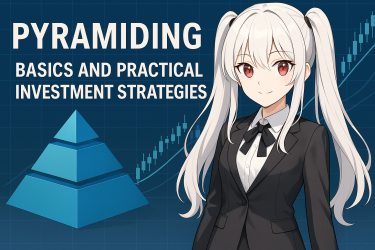- 1 1. Introduction
- 2 2. What is FX Automated Trading?
- 3 3. Advantages and Disadvantages of Custom Programs
- 4 4. Skills and Tools Needed for DIY
- 5 5. Development Steps for a Custom Program
- 5.1 How is an FX automated trading program built?
- 5.2 Step 1: Design the Trading Strategy (Logic)
- 5.3 Step 2: Verify Effectiveness with Backtesting
- 5.4 Step 3: Implement the Program
- 5.5 Step 4: Test Operation in a Demo Account
- 5.6 Step 5: Small‑Scale Operation in a Live Account
- 5.7 Additional Note: Importance of the PDCA Cycle
- 6 6. Points to Note and Risk Management
- 6.1 What are common pitfalls with self‑made EAs?
- 6.2 The Dangers of Over‑Optimization (Overfitting)
- 6.3 Programs that Cannot Adapt to Changing Market Conditions
- 6.4 Drawdowns from Lax Stop‑Loss Settings and Overconfidence
- 6.5 Server Environment and Communication Stability Are Also Important
- 6.6 Psychological Risk: The Danger of Over‑Leaving an EA Unattended
- 6.7 To Operate Self‑Made EAs Safely
- 7 7. Introduction of Success and Failure Cases
- 7.1 What Happens When You Actually Operate a Self-Made EA?
- 7.2 Success Case: Achieving Stable Operation with a Simple Logic
- 7.3 Success Case: Automating Discretionary Trading with Python × API Integration
- 7.4 Failure Case: Heavy Logic and Insufficient Testing Resulting in Big Loss
- 7.5 Failure Case: Runaway Entries Due to Programming Mistakes
- 7.6 What Makes the Difference Between Success and Failure?
- 8 8. Summary
- 9 Frequently Asked Questions (FAQ)
- 9.1 Q1. Can even a programming beginner create their own FX automated trading program?
- 9.2 Q2. MQL and Python, which should I use?
- 9.3 Q3. Is a VPS essential for running a self-made program?
- 9.4 Q4. What is important to consistently profit with a self-made EA?
- 9.5 Q5. Why do I lose in real trade even with good backtest results?
- 10 Reference sites
1. Introduction
Choosing to Build Your Own FX Automated Trading Program
In recent years, even among individual investors, the use of “FX automated trading programs” has been spreading. Automated trading, as the name suggests, is a system where a program automatically executes trades according to pre-set rules, rather than humans manually trading while watching charts.
Among them, the option of building your own stands out for its higher flexibility and superior customization. For traders who find commercial EA (Expert Advisor) tools insufficient or who want to faithfully reproduce a specific trading strategy, creating your own is a very attractive approach.
Purpose of This Article
In this article, using “FX automated trading program self-made” as the keyword, we will provide a detailed explanation of the following topics for readers ranging from beginners to intermediate levels:
- The mechanism of FX automated trading and basic knowledge
- Benefits and cautions of creating your own program
- Practical steps for development
- Introduction to necessary tools and skills
- Key lessons learned from success and failure cases
Even for programming beginners, we will proceed with detailed explanations of technical terms so that they can understand step by step. Additionally, at the end of the article, we have a section answering frequently asked questions, so please read all the way through.
2. What is FX Automated Trading?
Basic Mechanism of Automated Trading
FX automated trading is a trading method that automatically executes currency trades based on pre-set rules and algorithms. Traders do not need to manually view charts and make decisions; the program monitors the market 24 hours and automatically enters or exits when conditions are met.
This trading style is also known as “system trading” and offers the advantage of continuing trades without being swayed by emotions. For example, by setting technical indicators such as moving averages or RSI (Relative Strength Index) as conditions, you can operate trading rules in a logical and consistent manner.
Types of Automated Trading Tools
FX automated trading primarily comes in two forms:
- Pre-built automated trading tools (EA)
MetaTrader (MT4/MT5) and other trading platforms offer ready-made programs. Many are sold or distributed online, making them easy for beginners to adopt, but they come with the limitation of depending on someone else’s logic. - Automated trading using self-made programs
By using programming languages (MQL4/MQL5, Python, etc.) to build your own trading logic. It offers high flexibility, allowing fine-tuning of strategies and testing of new methods.
Differences Between Self-Made Programs and Commercial EAs
Commercial EAs are “easy to start”, but often become black boxes, with the logic and past performance being opaque. On the other hand, with self-made programs, you can decide all aspects of trading conditions, logic, and stop-loss design, making it easier to control the gap between backtest results and real trades.
Also, pre-built EAs may struggle to adapt to changes in market conditions, but with self-made programs, strategy updates can be performed flexibly, making them suitable for long-term operation.
3. Advantages and Disadvantages of Custom Programs
What Makes Customizing Attractive?
The biggest advantage of creating your own FX automated trading program is the high degree of freedom to fully implement your own strategy. The ability to reflect detailed condition settings and unique algorithms that cannot be reproduced by commercial EAs or tools is a strength unique to custom programs.
Furthermore, because you understand the program’s structure yourself, you can quickly identify and fix issues when the behavior seems off. This is difficult with black-box commercial EAs.
Advantages of Customizing
- High Customizability
You can reflect your trading logic down to the details and flexibly improve it according to market conditions. - Cost Performance
Once created, you can reuse it repeatedly, reducing the cost of purchasing EAs or subscription fees. - Leads to Skill Improvement
Practical skills in programming and market analysis are gained, which will be useful for future trading and system development. - Transparency and Reliability
Because you create it yourself, you fully understand the internal logic and can verify its operation.
Disadvantages of Customizing
- Time-Consuming Development
Especially for those with no programming experience, learning the language and tools takes a certain amount of time. - High Learning Cost
In addition to market knowledge, there is a lot to learn about coding styles, debugging methods, etc. - Risk of Bugs and Logic Errors
If the initial code contains mistakes, it can lead to unexpected losses, so testing is crucial. - Operational Mistakes from Overconfidence
Overconfidence that “since it’s custom, you will always win” is a mistake. Verification, verification, and verification are essential.
Who is Suitable for Customizing?
- Intermediate or advanced traders who want to automate their discretionary logic
- Beginners interested in programming or who want to try studying it
- Those who feel the limitations of commercial tools
- Those who enjoy data analysis and testing
Conversely, for those who want to make quick profits or don’t want to spend time on development, using a ready-made EA might be more suitable than custom solutions.
4. Skills and Tools Needed for DIY
What Do You Need to Build Your Own FX Automated Trading Program?
To build your own FX automated trading program, you need not only knowledge of trading strategies but also the technical skills and tools to implement them. Here, we introduce the minimum skills you should know and representative tools.
Essential Skill #1: Programming Basics
To build an automated trading system, you first need the skill to write programs. The following are representative languages.
- MQL4/MQL5 (MetaTrader Exclusive)
A language specialized for MetaTrader 4/5, widely used by many traders. It integrates easily with existing platforms, and its simple syntax makes it easy to develop trade-focused applications. - Python
Python is a popular language for analysis and testing. It excels at API integration and data preprocessing, and with tools like Jupyter Notebook, visual analysis is easy. It also pairs well with APIs provided by brokerage firms, and in recent years, automated trading using Python has become increasingly common.
<はじめに> このサイトはプログラミング言語MQL5で、MT5用のEA(自動売買プログラム:エキスパートアドバイザー)を…
🔰Note: For beginners, it is efficient to start by learning basic syntax such as “variables,” “if statements,” and “loops.”
Essential Skill #2: Logic Design and Validation
Even more important than programming is the design of the trading strategy. To generate profit, a logic with clear and consistent rules is essential. You need to consider a structure like the following.
- Entry conditions (buy or sell triggers)
- Exit conditions (take profit and stop loss rules)
- Lot size and capital management rules
Additionally, backtesting is essential to check how well the implemented logic performs.
Convenient Development Tools for DIY
- MetaEditor (MT4/MT5 Standard)
An integrated development environment (IDE) for developing EAs in MQL. It includes code completion, debugging, and built-in backtesting features. - Visual Studio Code (VSCode)
Recommended when developing in other languages such as Python. It has many extensions, and features like code completion and linting are user-friendly. - Examples of Libraries for Python
pandas: convenient for processing time‑series databacktrader: library for backtesting and strategy validationccxt: for API integration with cryptocurrency exchanges and some FX brokers- VPS (Virtual Private Server)
To run your automated trading program 24/7, you need to keep a PC running continuously or host it on a VPS. Many VPS services are dedicated to FX.
Helpful Auxiliary Skills
- Data organization using Excel or Google Sheets
- Safe code management with Git (version control)
- Basic English reading comprehension (since error messages and official documentation are often in English)
It may seem daunting, but starting by copying existing templates is sufficient at first. Understanding how the program works and gradually refining it to match your own strategy is the most realistic step‑up approach.
5. Development Steps for a Custom Program
How is an FX automated trading program built?
Here, we explain the entire process of creating an FX automated trading program in a clear, step-by-step manner. The steps are arranged in an order that is easy even for beginners to follow, so feel free to use them as a reference.
Step 1: Design the Trading Strategy (Logic)
First, you should design the trading strategy, which determines “when to buy or sell.” This forms the core of the program.
For example:
- Enter a buy when RSI falls below 30
- Buy when the 5-period moving average crosses above the 25-period moving average
- Go against the trend when the price moves beyond ±2σ of the Bollinger Bands
Translate these logics into “conditions” and consider how to implement them in code.
Step 2: Verify Effectiveness with Backtesting
Once you have a strategy, perform a backtest (validation using historical data) before jumping into live trading. Using MetaTrader or Python libraries, you can confirm how effective the strategy was with past price data.
Key points to verify:
- Win rate, profit‑loss ratio, maximum drawdown
- Frequency and timing of entries
- Long‑term equity curve
If the strategy has a low expected value at this point, it’s wise to either refine or discard it.
Step 3: Implement the Program
Once the logic is set, you can start implementing the code.
- Use MetaEditor when creating an EA in MQL4/MQL5
- When coding in Python, build while checking the API specifications
At this stage, you must accurately reproduce the trading conditions in code and incorporate error handling (exception handling). To prevent unexpected behavior, it’s recommended to start with a simple logic.
Step 4: Test Operation in a Demo Account
Running the finished program immediately in a live account is risky. First, run a trial in a demo account and verify that entries and exits occur as intended.
Checklist items to review here:
- Are there any timing discrepancies in orders?
- Are limit and stop‑limit orders entered correctly?
- Are there any errors (check the logs)?
Especially since behavior can change with timeframes (M1, H1, etc.) and spreads, it’s important to test under conditions close to the real environment.
Step 5: Small‑Scale Operation in a Live Account
If the demo account verification is fine, the next step is to transition to small‑scale operation in a live account. Keep the capital low at first and monitor the operation carefully.
In real trading, new variables such as the following come into play:
- Actual spread fluctuations
- Execution delays and slippage
- Stability of operation in a VPS environment
By confirming these, gradually increase the operating amount and eventually step up to full‑scale automated trading.
Additional Note: Importance of the PDCA Cycle
A custom automated trading program isn’t finished once it’s built. Even during operation, analyze the results and repeat the cycle of “improve → test → re‑operate” to achieve more stable performance.
6. Points to Note and Risk Management
What are common pitfalls with self‑made EAs?
When creating your own FX automated trading program, there are many points you must be careful about at each stage of development and operation. Here, we explain the mistakes that beginners are prone to and the risk management techniques to minimize losses.
The Dangers of Over‑Optimization (Overfitting)
In an attempt to achieve excellent results in backtesting, many fall into the trap of “over‑optimization (overfitting)”. This occurs when parameters and logic are over‑adjusted to past data, resulting in a system that completely fails in live markets.
Examples of symptoms:
- Win rates vary from year to year
- Only works for specific currency pairs or timeframes
- Seemingly perfect equity curve, but crashes in live operation
🔍 Countermeasures:
- Extend the test period sufficiently long (recommended 5+ years)
- Conduct forward testing (validation with future data)
- Avoid overly complex logic and prioritize generality

Programs that Cannot Adapt to Changing Market Conditions
Markets can be in various states such as trending, ranging, or volatile. A logic that is too specialized to one market environment carries the risk of becoming ineffective as soon as the market changes.
📈 Examples:
- Trend‑based logic triggers frequent stop‑losses in a ranging market
- Breakout strategy gets caught in a false breakout and suffers consecutive losses
🔍 Countermeasures:
- Incorporate filters that identify market conditions
- Combine multiple strategies to enhance stability
- Regularly update to adapt to market changes
Drawdowns from Lax Stop‑Loss Settings and Overconfidence
“Because it’s self‑made, I don’t need to set a stop‑loss” or “It will recover in the long run”—such assumptions can wipe out your capital in an instant. It is important not to underestimate the expected maximum drawdown and to limit risk in advance.
🔍 Countermeasures:
- Introduce trailing stops or time‑based automatic liquidation
- Set risk tolerance per position (1–2%)
- Implement forced stop‑losses
Server Environment and Communication Stability Are Also Important
No matter how excellent the program is, it means nothing if the execution environment is unstable. Especially for EAs that must run 24/7, the reliability of the communication environment and server directly affects performance.
🔍 Countermeasures:
- Use a domestic or overseas VPS (verify MT4 compatibility)
- If operating from a home PC, prepare for power outages and reboot risks
- Mitigate communication outages and slippage (implement recovery logic)
Psychological Risk: The Danger of Over‑Leaving an EA Unattended
“Automated trading = completely unattended” is a common misconception, but it’s wrong. Continuous monitoring and log review are required during operation. Even if abnormal behavior or execution errors occur, leaving it unattended will allow losses to keep growing.
🔍 Countermeasures:
- Check the operation status regularly (even once a day is fine)
- Set a rule to stop immediately if an error or large loss occurs
- Record logs and evidence, and devise measures to prevent recurrence
To Operate Self‑Made EAs Safely
To operate self‑made EAs safely, you need to simultaneously manage the three risks: technical, market, and human. This is a world that demands planning and verification even more than discretionary trading.
Automation is not simple. That’s why understanding the risks and not neglecting preparation allows you to stay a step ahead of other traders.
7. Introduction of Success and Failure Cases
What Happens When You Actually Operate a Self-Made EA?
Creating your own FX automated trading program is most useful when you have real-world experiences and examples, not just theory. Here, we’ll introduce success and failure cases from people who actually operated their self-made programs, and look at what points made the difference in the results.
Success Case: Achieving Stable Operation with a Simple Logic
Case: Mr. A (company employee, 30s)
Mr. A started FX as a side job and created a simple trend-following strategy using RSI and moving averages in MQL4. Backtests showed a 55% win rate and a profit factor of 1.4, modest results, but in a year of real operation he consistently maintained a monthly return of 3–5%.
Although there were no huge wins, he says the success factor was “not over-tweaking the logic and running it steadily.”
Key Points:
- Avoided excessive optimization
- After more than a month of demo testing, deployed to live
- 24‑hour monitoring and log recording on a VPS
Success Case: Automating Discretionary Trading with Python × API Integration
Case: Mr. B (individual investor, 40s)
With 10 years of discretionary trading experience, Mr. B automated his breakout strategy in Python. By linking with a brokerage API and designing it to trade only during a specific morning time slot, he achieved an annual return of over 40%.
What’s noteworthy is the focus on a simple, reproducible design that “runs only in the morning” and “one trade per day.”
Key Points:
- Codified the quirks of discretionary trading
- Designed strict error handling for the API
- Ensured safety with real‑time monitoring + Slack notifications
Failure Case: Heavy Logic and Insufficient Testing Resulting in Big Loss
Case: Mr. C (student, 20s)
Mr. C copied an EA code found online and built a complex logic. However, despite high performance in backtests, in real trading he lost more than 30% of his capital within weeks.
The cause was that he didn’t account for market spread fluctuations or execution delays, and his stop‑loss settings were too lenient.
Lesson from Failure:
- Skipped demo testing and jumped straight into live operation
- Overfitted in pursuit of a “winning logic”
- Did not implement error handling or logging
Failure Case: Runaway Entries Due to Programming Mistakes
Case: Mr. D (freelancer, 30s)
He started running an EA written in MQL5 on a VPS. However, a mistake in the code’s condition caused it to place large orders every second instead of a single entry. The margin maintenance ratio plummeted, leading to forced stop‑losses.
Lesson from Failure:
- Insufficient testing (especially for unintended behavior)
- No control over “maximum position size”
- No error alert system
What Makes the Difference Between Success and Failure?
In short, the difference between successful and unsuccessful traders is whether they have a habit of verification and management.
Successful people share these traits:
- Start small
- Never neglect testing and analysis
- Take measures to keep risk to a minimum
On the other hand, many of those who failed:
- Jumped straight into a live account
- Reused code without fully understanding it
- Let the desire to make money override calmness
Operating a self‑made EA is ultimately an investment, not a gamble. That’s why learning from the successes and failures of experienced traders is extremely important.
8. Summary
The Appeal and Reality of DIY FX Automated Trading Programs
Creating your own FX automated trading program may seem daunting at first. However, with solid learning and a step-by-step approach, it is possible to program your own trading logic and create an environment that automatically targets profits.
Through this article, we have introduced the following points.
- The workings of automated trading and the pros and cons of DIY
- Required programming skills and development environment
- Concrete steps from strategy design to testing and live operation
- Lessons learned from common failures and success stories
- Risk management concepts for safe operation
All of these demonstrate that simply writing code is not enough to win. What matters is a mindset of facing the market, anticipating risks, and continuously testing.
DIY EAs are a Fusion of Technology and Thought
A self-made automated trading program is more than just a collection of code. It reflects your own trading philosophy, your approach to risk, and your commitment to continuous improvement.
- Want to automate markets you excel in
- Want to run it efficiently between side jobs and main work
- Want to systematize asset management
For those with such goals, DIY EAs hold great potential.
Let’s Take the First Step
Rather than trying to create a perfect program, the first step is to build something that works. Don’t overthink it; start with a simple logic.
Your first small success will guide you toward continuous growth and profitability.
Frequently Asked Questions (FAQ)
Q1. Can even a programming beginner create their own FX automated trading program?
A1. Yes, it is possible.
At first it may feel difficult, but there are plenty of beginner-friendly learning resources for MQL4 and Python. It is recommended to start with a simple logic such as “buy and sell only with moving averages.” There are many templates online, so you can start by copying and customizing them to deepen your understanding.
Q2. MQL and Python, which should I use?
A2. It depends on your purpose.
- If you want to keep everything within MetaTrader → MQL4 or MQL5 is recommended. You can run it directly as an EA on MT4/MT5.
- If you want flexible data analysis or API integration → Python is recommended. It is easy to connect to external services and databases, and you can write highly reusable code.
Q3. Is a VPS essential for running a self-made program?
A3. A VPS is recommended for long-term stable operation.
You can run it on a home PC, but there’s a risk of sudden restarts or communication failures. If you want to run it 24/7, using a VPS service that supports FX brokers will give you stability and peace of mind.
Q4. What is important to consistently profit with a self-made EA?
A4. Consistency, testing, and risk management are the keys.
- Operate with a logic that isn’t overly complex
- Regular backtesting and forward testing
- Set stop‑losses with awareness of maximum drawdown
- Flexible review according to changes in market conditions
By consistently following these, you are more likely to achieve stable results.
Q5. Why do I lose in real trade even with good backtest results?
A5. In many cases, the cause is “over‑optimization” or “discrepancy with real‑world conditions”.
Spreads, execution speed, slippage, server load, and other factors can affect performance in real environments. Relying solely on backtests is insufficient; it is essential to validate through a demo account and then a small real account in stages.
Reference sites
For beginners who have just stepped into the world of trading, finding the best investment strategy among many can be a […]
Amazon: The World’s Easiest FX Automated Trading EA Programming Textbook
















